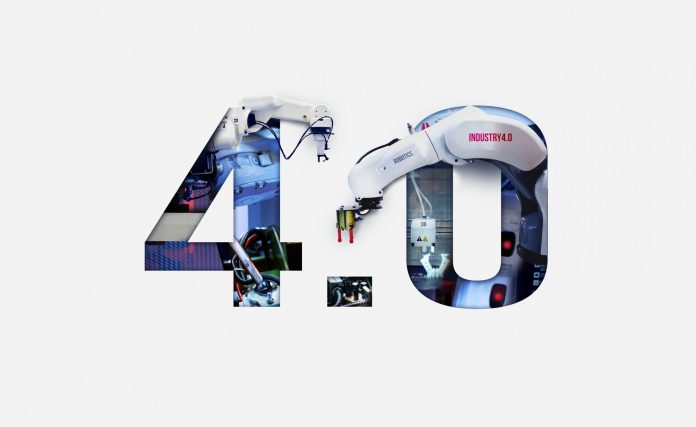
Keeping its finger on the ‘IIoT pulse’, SMC Corporation continues its journey towards incorporating smarts across its broader component range.
By SMC Australia New Zealand Global Account and Digital Transformation Leader Jozef Ceh.
The company is taking a holistic approach to product upgrades as part of its commitment to industry 4.0.
One could say that we have our eyes on every product range in our stable right now.
More and more products are being developed and upgraded in-line with smart requirements. SMC’s primary mandate is to deliver mechanical and electrical products that are industry 4.0 enabled as well as energy and CO2 efficient.
SMC’s strategy is two-fold. We support customers who are upgrading existing systems and are in search of more functionality; and we support customers in non-traditional, developing markets where there is great potential for industry 4.0 collaboration.
More education = less resistance
Speaking to the accelerated uptake of IIoT technologies in-line with the Covid-19 lockdown, education (first and foremost) has resulted in an influx of companies openly demonstrating industry 4.0 implementation. There is a better understanding of the technology and its potential Return on Investment (ROI).
With price on everyone’s minds, companies adopting IIoT technologies are becoming more cost competitive. Contrary to popular belief, it’s not always about large investments or new technology –smarts can be implemented right down to sensor level.
A lot of past resistance was due to a lack of understanding around the outcomes and benefits of such technologies.
However, today the returns and benefits are more transparent.
A shift in demand
Enquiries for such technologies has seen a dramatic shift. We’ve gone from enquiring about a task being fulfilled to enquiring about further functionalities. Upgrades to machines enable flexibility and higher functionalities. Customers want finer controls over speed, cycle times, position, reconfiguration, quick changes, data processing etc.
OEMs are redesigning control systems to accommodate multiple machines. This is of great benefit to the end user and requires only software changes – rather than disruptive hardware changes.
Improving cycle times
Speaking to the one of the biggest drivers of IIoT technologies, it’s all about the cycle time.
Customers are increasingly turning to suppliers for an improvement in their manufacturing cycle times.
Improving outputs and reducing errors is the key to growing a business and competing in challenging times. Engineers are constantly looking for ways to improve processes. Having smart technologies that work in orchestrated collaboration ensures optimum speed and control.
The best part is that companies can improve cycle times using the same equipment.
Customers can optimise on speed without shortening the life of the product and wearing them out and products can be synchronised to run in a collaborative manner. This is the next level of cycle optimisation – it isn’t up to the individual components but up to the process to be optimised. Tracking data, position and the integration of higher functional sensors gives us a lot more opportunity to get higher cycle time without decreasing life cycle or increasing maintenance.
Reaching sustainability targets through industry 4.0
Sustainable development goals and the management of CO2 emissions are a big part of industry 4.0. Using industry 4.0 to reach these sustainable development goals is a real possibility. Smarter products reduce waste, improve efficiency and offers direct correlation to reducing CO2 footprint.
SMC has made a global corporate commitment to the reduction of CO2 and is playing its part in reaching the targets set across the world. This means constantly looking at products and offering solutions on how smaller products, with less footprint can provide more smarts while being manufactured in a way which uses as little energy as possible. These products are constantly being development and are put out into the sector to solve client’s needs in the same way. Continuous improvement has always been part of the way SMC does business, especially as a Japanese owned company.
To conclude, while it’s been 10 years since the words industry 4.0 were first uttered, there are still many exciting possibilities to be uncovered. As we evolve there is more investment and studies that look to uncover blind spots.
Industry 4.0 has the ability to take manufacturing to the next level. We have to use technology to do more with less. The future of technology certainly is exciting.

About SMC
Founded over 60 years ago, SMC operates in 83 countries, employing 19,000 people across the globe. It has an R&D engineering team of 1,450 and an 8,200-strong sales force, who are experts in their field and enjoy a close working relationship with SMC’s customers. To deliver automation solutions for its diverse customer base, SMC offers more than 12,000 basic products with over 700,000 variations. SMC is the world’s leading pneumatics provider and has been voted for three consecutive years as one of the most innovative global companies by leading business magazine, Forbes and is listed in the FORBES Global 2000 as one of the world’s largest public companies.
For more information visit smcanz.com.
For sales inquiries contact AUsales@smcanz.com or NZsales@smcanz.com.
For editorial inquiries contact Rene Rose rrose@positiv.co.com or M +61 474 476344.





